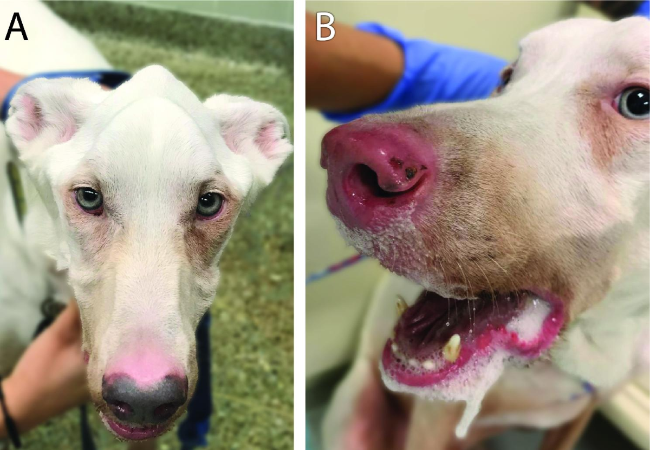Non‑Inflammatory Myopathy of Endocrine Origin in Dogs – Vet Guide 2025 🐶💉🩺

In this article
Non‑Inflammatory Myopathy of Endocrine Origin in Dogs – Vet Guide 2025 🐶💉🩺
By Dr. Duncan Houston BVSc
Hello, I’m Dr Duncan Houston, BVSc, founder of Ask A Vet. Endocrine myopathy is a non‑inflammatory muscle disease caused by hormonal imbalances—like hypothyroidism, hyperthyroidism, Cushing’s, or exogenous corticosteroids. This comprehensive 2025 guide will help you understand how hormone disorders affect your dog’s muscles, the clinical signs to watch for, diagnostic steps, treatment options, and how to support your pet long-term. Let’s get started! 💙
📘 What Is Endocrine Myopathy?
It’s a non‑inflammatory muscle disease that leads to muscle weakness, atrophy, cramps, stiffness, and sometimes dysphagia—all due to endocrine disorders such as:
- Hypothyroidism (low thyroid hormone)
- Hyperthyroidism (rare, usually tumor-induced)
- Hyperadrenocorticism (Cushing’s disease)
- Prolonged corticosteroid therapy
🚩 Clinical Signs to Watch For
- Generalized muscle weakness, exercise intolerance
- Muscle wasting and stiffness
- Cramps or muscle tremors
- Swallowing difficulty—regurgitation, dysphagia, hoarse bark
- Weight loss or altered gait patterns
🔍 How Is It Diagnosed?
- History & physical exam: note steroid use, hormone-related symptoms
- Bloodwork: CBC, biochemistry, creatine kinase—often normal or modestly elevated
- Hormone panels: T4/TSH for thyroid, ACTH stimulation or LDDST for adrenal issues
- Imaging: ultrasound/CT to detect thyroid masses or adrenal enlargement
- EMG & biopsy: in rare cases, to confirm muscle involvement
💉 Treatment Approaches
- Hypothyroidism: levothyroxine supplementation
- Hyperthyroidism: treat tumors surgically or with medications like methimazole; chemotherapy for carcinomas
- Cushing’s: treat with trilostane or mitotane, or adrenalectomy if tumor-caused
- Steroid induced: taper dosage or discontinue if possible
- Supportive care: balanced nutrition, muscle rehab, anti-cramp supplements
🏡 Home Care & Management
- Encourage gentle exercise and mobility
- Monitor swallowing and prevent aspiration pneumonia
- Adjust diet—small meals, easy-to-swallow texture
- Use soft bedding and assistive devices as needed
📅 Monitoring & Follow-up
- Regular rechecks every 4–8 weeks after starting hormone therapy
- Track muscle strength, weight, CK, thyroid/adrenal panels
- Adjust treatments based on clinical signs and labs
- Slow taper of meds once stable, with close follow-up
✨ Prognosis & Lifestyle Outlook
- Excellent prognosis if underlying endocrine imbalance is treated appropriately
- Steroid-induced cases often reverse with dose adjustment
- Untreated hormone diseases may progress to life-threatening complications
- With proactive care and monitoring, dogs can maintain good function and quality of life
🐾 Ask A Vet
For diagnosis, hormone panel interpretation, or recovery planning, connect with a neurologist via Ask A Vet. Support muscle rehabilitation with accessible slings and
✨ Key Takeaways
- Endocrine myopathy is a reversible, non‑inflammatory muscle disorder.
- Associated with hypo/hyperthyroidism, Cushing’s, or steroid use.
- Signs include weakness, cramps, muscle loss, dysphagia, and stiffness.
- Diagnosed by history, blood tests, hormone panels, and sometimes EMG/biopsy.
- Treatment focuses on correcting hormone levels and supportive therapy.
- With timely care and monitoring, most dogs recover fully and thrive. 🐶❤️
If you notice muscle weakness, swallowing issues, or cramping, contact your vet or Ask A Vet. Prompt hormone testing and care make all the difference. 🩺






